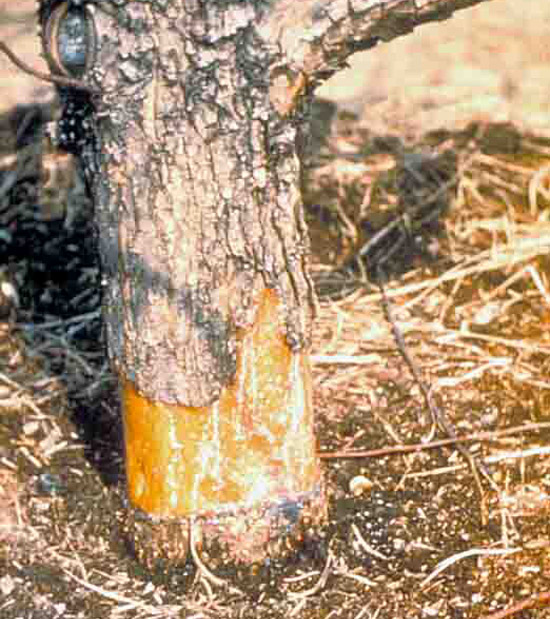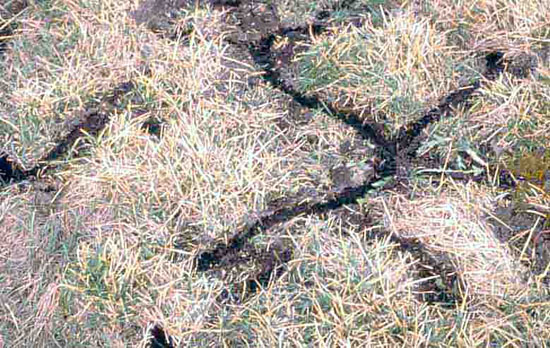Issue 1, April 28, 2014
Meadow Vole
Meadow voles eat runways through turf and strip bark off of trees and shrubs below the snow during the winter. These field mice are larger than house mice with broad heads and short tails. Last winter with its lingering snow cover was ideal for voles to live and feed under the snow with little predator impact. Dogs, cats, mink, weasels, raccoons, opossums, skunks, coyotes, hawks, owls, and many other predators feed on voles, but they are difficult to find under the snow.
Damage to trees and shrubs start at or just below the soil line and extends as high as the snow line. There is no damage above the snow because the rodents are then exposed to predators. Voles eat away the bark, girdling and killing the plants. Close examination of damaged stems reveals slanted cuts or V-shaped marks left by their teeth.

Vole damage to trunk.
Voles also eat turfgrasses, consuming the leaves, stems, crowns, and roots. Damage appears as narrow, winding, open-topped runways about two inches wide. The size of these winding trails is reminiscent of a garden hose left on the turf, resulting in dead turf beneath it. However, the voles remove the grass plants completely, leaving only bare soil behind. Turf damage is most common near cover for these mice, such as heavily mulched and groundcover areas, but the extended snow cover last winter allowed for damage far from these areas. With rapid growth in spring, these runways will be filled in quickly by the surrounding turf.

Vole damage to turf.
With the snow melted, predators make short work of the excess voles. These mice provide food necessary for their predators to raise their young. Vole damage is prevented by applying mulch no thicker than 2-3 inches and thinning out groundcovers. It is helpful to rake away and remove mulch around young trees as winter approaches to reduce vole cover. Removing snow from around young trees during the winter is also helpful. Anything that exposes voles to their predators reduces damage. (Phil Nixon)
Author:
Phil Nixon